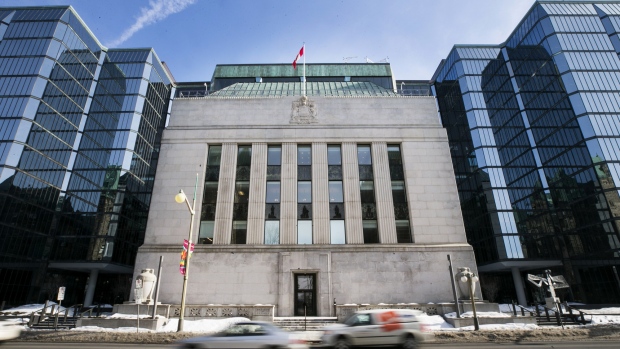Oct 15, 2018
Canadian firms expect to ramp up investment: Bank of Canada survey
, Bloomberg News

Canadian business sentiment remains at elevated levels, with companies expecting to ramp up investment to build new capacity and accommodate demand, according to a survey by the central bank.
The Ottawa-based central bank’s third-quarter survey of executives -- which took place in August and September before Canada reached a deal with the U.S. to replace the North American Free Trade Agreement -- shows an economy in which companies see their outlook for sales improving but continue to find it difficult to increase production. To cope, investment intentions are near records, the survey found.
The report should bolster confidence among Bank of Canada policy makers the economy can handle the higher borrowing costs needed to bring rates back to more normal levels. The central bank has already increased rates four times since last year, with investors expecting as many as four more hikes over the next 12 months, including one later this month.
“Responses to the autumn Business Outlook Survey indicated that near-term business prospects continue to be robust,” the Bank of Canada said in a summary of its findings. “Strong demand and elevated capacity pressures support firms’ investment and employment intentions.”
The Bank of Canada’s composite gauge of sentiment -- what it calls the Business Outlook Survey underlying indicator -- recorded a 2.83 reading. While slightly less than the 3.11 reading in the second quarter, it is one of the highest scores in records going back to 2001.
The Canadian dollar rose on the report, gaining 0.1 per cent to $1.3010 per U.S. dollar at 10:36 a.m. in Toronto trading.
Highlights of the Survey
- Companies are expecting stronger future sales growth than they were three months ago, with more firms (41 per cent) expecting an acceleration in sales growth, and fewer firms expecting a deceleration
- The share of firms anticipating higher spending on machinery and equipment rose to 51 per cent, matching a record last hit in 2006.
- Employment intentions actually declined. The share of businesses anticipating higher employment over the next 12 months dropped to 51 per cent from 56 per cent, while those anticipating less employment rose to 13 per cent from 5 per cent
- The number of companies reporting at least some difficulty in meeting demand was little changed at 56 per cent, historically elevated levels.
- The number of firms facing labor shortages increased to 37 per cent, the highest since 2008. Firms are also reporting labor shortages are intensifying at a pace not seen in more than a decade.
- Inflation expectations aren’t intensifying but remain relatively elevated, with 62 per cent of respondents expecting inflation of above 2 per cent
- Expectations for output and input prices were little changed
--With assistance from Erik Hertzberg.